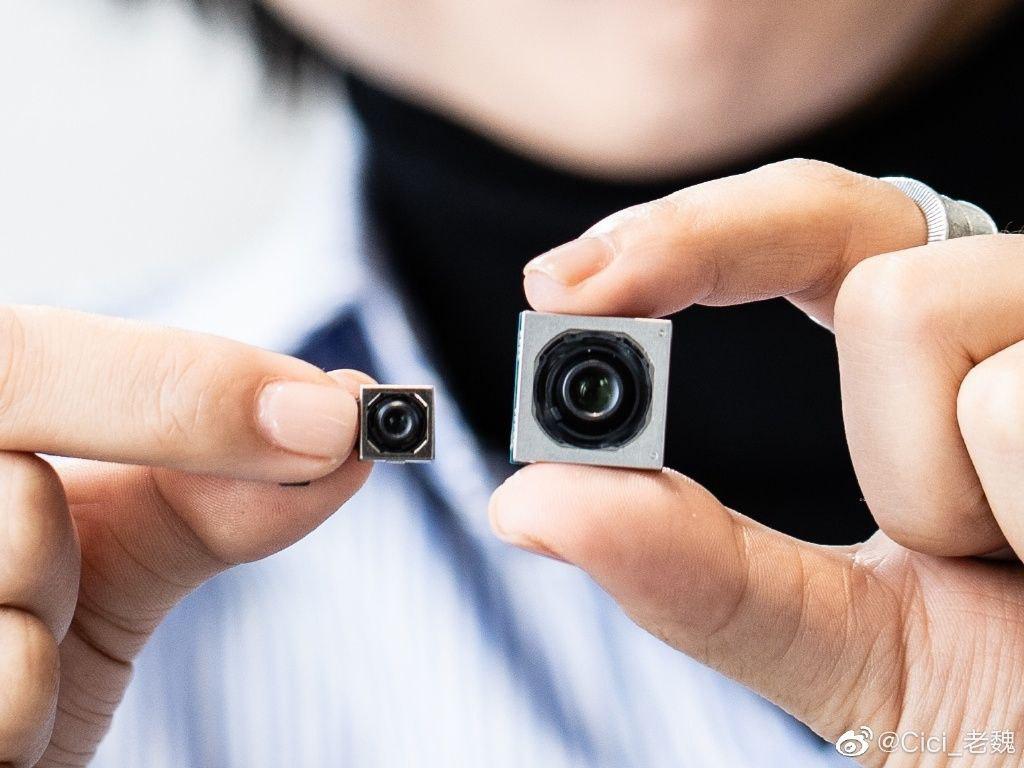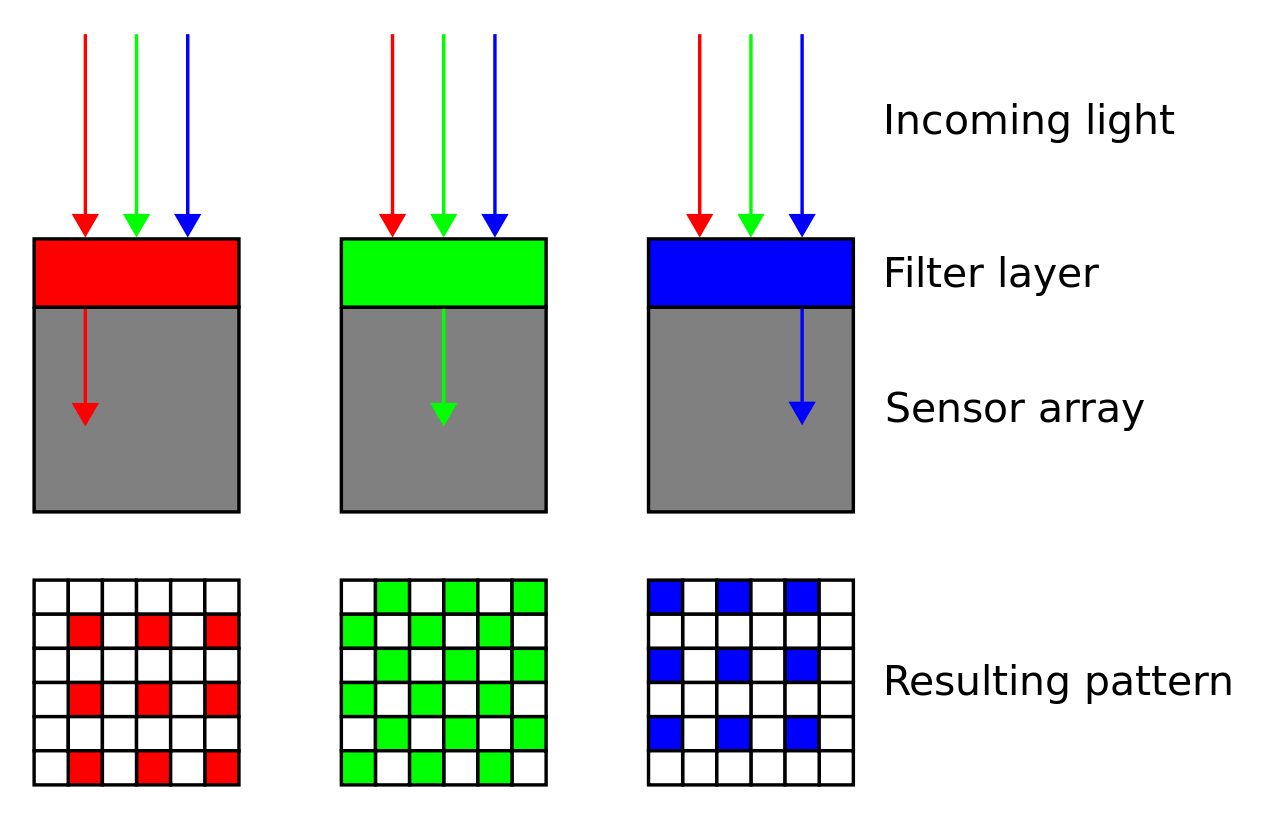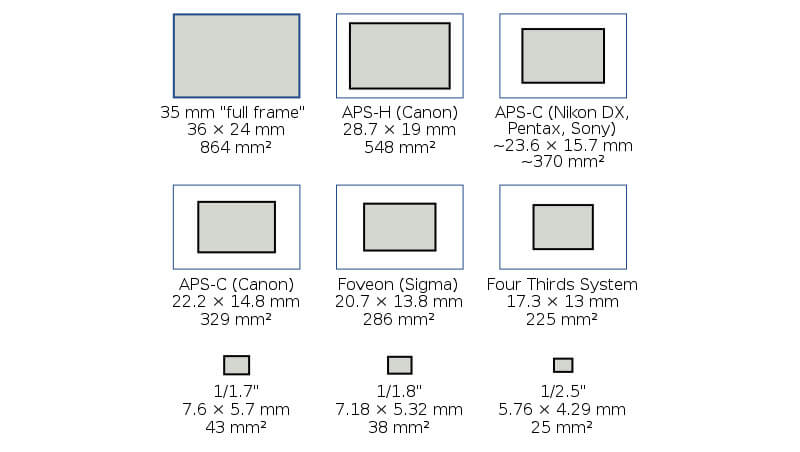In any digital camera, the sensor is the most important piece of equipment. Without it, we wouldn’t be able to capture any images with our digital cameras.
And if you have looked around the internet enough, you may have noticed how many people agree that the sensor is more important than megapixels.
But what exactly is the sensor? How does it work? Does the size impact picture at all?
In this article, I will answer these and other questions you may have regarding the smartphone camera sensor.
What is the Sensor?
Back in the old days of photography before digital cameras, people used to take photos on a roll of celluloid film. This film was coated with a special chemical that produced an image when it was exposed to light.
When digital photography took over, the old film system was done away with and replaced with an electronic device.
When the shutter is activated, the sensor is exposed to light and captures it in its photosites until the shutter is deactivated.
The duration for which the shutter remains activated is known as the shutter speed (or exposure time). The longer the shutter is activated, the more light the camera’s sensor can receive.
There are two types of sensors that can be found in digital cameras: the CCD and CMOS sensors. They’re both responsible for converting light into electric signals but they work differently.
The CCD (Charge-Coupled Device) sensor is the more traditional sensor. It’s an analogue device that captures an image in one shot and converts it into one sequence of voltage.
A CCD sensor performs well in low light and doesn’t suffer as much from digital noise as a CMOS sensor.
But because the CCD sensor is expensive and uses a lot of power, it is not as popular in smartphone cameras as its counterpart.
CMOS (Complementary Metal-Oxide Semiconductor) uses less power than CCD, which makes it ideal for mobile devices.
This type of sensor doesn’t capture an entire image in a single instance but rather captures images in a scanning type of way.
The downside to this is an issue of as the rolling shutter effect, where the image gets skewed when the sensor tries to interpret a moving object. This is an issue that’s most problematic when recording video.
Smartphones almost universally use CMOS sensors. Very few use CCD these days.
Each colour filter covers one photosite and captures light that corresponds with its colour.
In other words, the red filter allows red light to be captured, the green filter captures green light and the blue filter allows blue light in.
Digital cameras can only capture one primary colour in each photosite. The others are reflected.
The question is if a sensor only receives red, green, and blue colour information, how do digital images pixels have colour information such as yellow, purple, orange, magenta, or any other colour? This is done through an interpolation process known as demosaicing.
Because the Bayer filter is an RGB mosaic, every pixel is missing colour information from the other two colours of the RGB colour combo.
Demosaicing happens when the camera’s processor calculates the colour values missing in each pixel by calculating the colour values of neighbouring photosites.

Different phones have different size sensors but smartphone camera sensors are notoriously small.
The most recent phone releases from popular brands such as Apple and Samsung have image sensors that are 1/2.55”, which seems to be about the average across the board.
The phone that holds the record of having the largest sensor to date is the 2014 Panasonic Lumix CM1 that had a 1-inch sensor.
In 2019, the biggest sensor so far is 1/1.7” and can be found in the Huawei P30 Pro and Mate 30 Pro.
The Xiaomi Mi Mix Alpha dropped in December 2019 and is has a 1/1.33” sensor, which will be the biggest sensor on a smartphone camera in recent years.
How big is a phone camera sensor compared to full-frame DSLR sensor?
Smartphone camera sensors have definitely increased in size over the years, and indeed have reached some amazing heights but they still pale in comparison to full-frame sensors the likes of which are found in DSLR cameras.
Full-frame image sensors are 35mm in diameter, the exact size as old school celluloid film. Hence the name full-frame.
There are many smaller frame sensors (known as crop sensors) and smartphone sensors are found at the tail end of the spectrum.
How does sensor size impact images?
The size of the sensor definitely has a huge impact on the quality of the images that the camera can produce. It’s one of the important factors that contribute to what makes a mobile phone photo look amazing.
The bigger the sensor, the bigger the photosites and the more megapixels the camera can pack.
Big photosites mean the sensor gets to capture more light. This is especially useful in situations where the lighting is poor.
The more megapixels, the more resolution your images will have. However, the truth about megapixels is something you should know about because more doesn’t necessarily mean better.
Because they’re so small in size, the photosites on a smartphone camera sensor are very small. This puts smartphone cameras at a disadvantage when it comes to how much light their sensors can capture.
So if your phone camera doesn't perform well in poor lighting, the sensor could be one of the reasons why your mobile photos don't look great at night.
If you’re about to buy a new smartphone and the main camera is your biggest priority, be sure to look out for a phone camera that has a big sensor.
However, remember that the number of pixels and their size matters, too. Be sure to choose one that will give you the type of images you want.
Here are some links to help you:
And if you have looked around the internet enough, you may have noticed how many people agree that the sensor is more important than megapixels.
But what exactly is the sensor? How does it work? Does the size impact picture at all?
In this article, I will answer these and other questions you may have regarding the smartphone camera sensor.
What is the Sensor?
Back in the old days of photography before digital cameras, people used to take photos on a roll of celluloid film. This film was coated with a special chemical that produced an image when it was exposed to light.
When digital photography took over, the old film system was done away with and replaced with an electronic device.
When the shutter is activated, the sensor is exposed to light and captures it in its photosites until the shutter is deactivated.
The duration for which the shutter remains activated is known as the shutter speed (or exposure time). The longer the shutter is activated, the more light the camera’s sensor can receive.
Types of Camera Sensors
There are two types of sensors that can be found in digital cameras: the CCD and CMOS sensors. They’re both responsible for converting light into electric signals but they work differently.
The CCD (Charge-Coupled Device) sensor is the more traditional sensor. It’s an analogue device that captures an image in one shot and converts it into one sequence of voltage.
A CCD sensor performs well in low light and doesn’t suffer as much from digital noise as a CMOS sensor.
But because the CCD sensor is expensive and uses a lot of power, it is not as popular in smartphone cameras as its counterpart.
CMOS (Complementary Metal-Oxide Semiconductor) uses less power than CCD, which makes it ideal for mobile devices.
This type of sensor doesn’t capture an entire image in a single instance but rather captures images in a scanning type of way.
The downside to this is an issue of as the rolling shutter effect, where the image gets skewed when the sensor tries to interpret a moving object. This is an issue that’s most problematic when recording video.
Smartphones almost universally use CMOS sensors. Very few use CCD these days.
How does the Sensor Work?
The sensor as a device is made up of millions of light-catching cavities known as photosites (sometimes referred to as pixels, which can be confusing). When the shutter is activated, these photosites capture light for as long as the sensor remains exposed.
The light photons that are captured by each photosite are interpreted as an electrical signal. The strength of this signal will vary depending on how many photons were captured by the photosite.
The best way to understand this to image each photosite/pixel as a bucket catching rainwater. The rain represents the light that enters the camera and is captured by the photosites.
If the bucket is filled all the way up to the top, the camera’s processor determines that it’s a white pixel. If the bucket is empty, it’s a black pixel. Anything else in between will be a varied intensity of grey.
The Bayer filter
Black, white, and grey? What about colour? To capture images in colour, a colour filter array known as the Bayer filter is needed.
This coloured filter is the most popular and consists of alternating rows of the three primary colours red, green, and blue. It is placed over the photosites. Half the array is made up of green filters, while blue and red each take up a quarter.
The sensor as a device is made up of millions of light-catching cavities known as photosites (sometimes referred to as pixels, which can be confusing). When the shutter is activated, these photosites capture light for as long as the sensor remains exposed.
The light photons that are captured by each photosite are interpreted as an electrical signal. The strength of this signal will vary depending on how many photons were captured by the photosite.
The best way to understand this to image each photosite/pixel as a bucket catching rainwater. The rain represents the light that enters the camera and is captured by the photosites.
If the bucket is filled all the way up to the top, the camera’s processor determines that it’s a white pixel. If the bucket is empty, it’s a black pixel. Anything else in between will be a varied intensity of grey.
The Bayer filter
Black, white, and grey? What about colour? To capture images in colour, a colour filter array known as the Bayer filter is needed.
This coloured filter is the most popular and consists of alternating rows of the three primary colours red, green, and blue. It is placed over the photosites. Half the array is made up of green filters, while blue and red each take up a quarter.
Each colour filter covers one photosite and captures light that corresponds with its colour.
In other words, the red filter allows red light to be captured, the green filter captures green light and the blue filter allows blue light in.
Digital cameras can only capture one primary colour in each photosite. The others are reflected.
The question is if a sensor only receives red, green, and blue colour information, how do digital images pixels have colour information such as yellow, purple, orange, magenta, or any other colour? This is done through an interpolation process known as demosaicing.
Because the Bayer filter is an RGB mosaic, every pixel is missing colour information from the other two colours of the RGB colour combo.
Demosaicing happens when the camera’s processor calculates the colour values missing in each pixel by calculating the colour values of neighbouring photosites.
How big is a Smartphone Camera Sensor?
The size of the sensor is usually expressed in inches as a fraction such as 1/2.55” or 1/3”. This might seem to indicate the diagonal measurement of the sensor but that is not the case, which can be confusing.
There’s a whole history behind why this method of measurement. It’s quite involved but it pretty much boils down to manufacturers trying to veer consumer attention away from how small the sensors actually were.
The size of the sensor is usually expressed in inches as a fraction such as 1/2.55” or 1/3”. This might seem to indicate the diagonal measurement of the sensor but that is not the case, which can be confusing.
There’s a whole history behind why this method of measurement. It’s quite involved but it pretty much boils down to manufacturers trying to veer consumer attention away from how small the sensors actually were.

Different phones have different size sensors but smartphone camera sensors are notoriously small.
The most recent phone releases from popular brands such as Apple and Samsung have image sensors that are 1/2.55”, which seems to be about the average across the board.
The phone that holds the record of having the largest sensor to date is the 2014 Panasonic Lumix CM1 that had a 1-inch sensor.
In 2019, the biggest sensor so far is 1/1.7” and can be found in the Huawei P30 Pro and Mate 30 Pro.
The Xiaomi Mi Mix Alpha dropped in December 2019 and is has a 1/1.33” sensor, which will be the biggest sensor on a smartphone camera in recent years.
The Xiaomi Mi Mix Alpha has a smaller sensor than the Xiaomi Mi Note 10 with its 108 MP Sensor.
Full-frame image sensors are 35mm in diameter, the exact size as old school celluloid film. Hence the name full-frame.
There are many smaller frame sensors (known as crop sensors) and smartphone sensors are found at the tail end of the spectrum.
A full-frame 35mm sensor measures 864mm2 while a 1/1.7” smartphone sensor only measures 43mm2.
That means the current largest mobile phone camera sensor found in Huawei’s flagship phones is 20 times smaller than a full-frame DSLR sensor. That’s a lot!
How does sensor size impact images?
The size of the sensor definitely has a huge impact on the quality of the images that the camera can produce. It’s one of the important factors that contribute to what makes a mobile phone photo look amazing.
The bigger the sensor, the bigger the photosites and the more megapixels the camera can pack.
Big photosites mean the sensor gets to capture more light. This is especially useful in situations where the lighting is poor.
The more megapixels, the more resolution your images will have. However, the truth about megapixels is something you should know about because more doesn’t necessarily mean better.
Because they’re so small in size, the photosites on a smartphone camera sensor are very small. This puts smartphone cameras at a disadvantage when it comes to how much light their sensors can capture.
So if your phone camera doesn't perform well in poor lighting, the sensor could be one of the reasons why your mobile photos don't look great at night.
If you’re about to buy a new smartphone and the main camera is your biggest priority, be sure to look out for a phone camera that has a big sensor.
However, remember that the number of pixels and their size matters, too. Be sure to choose one that will give you the type of images you want.
Here are some links to help you:

